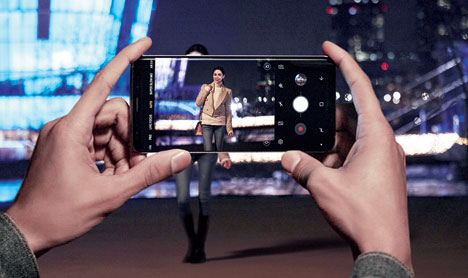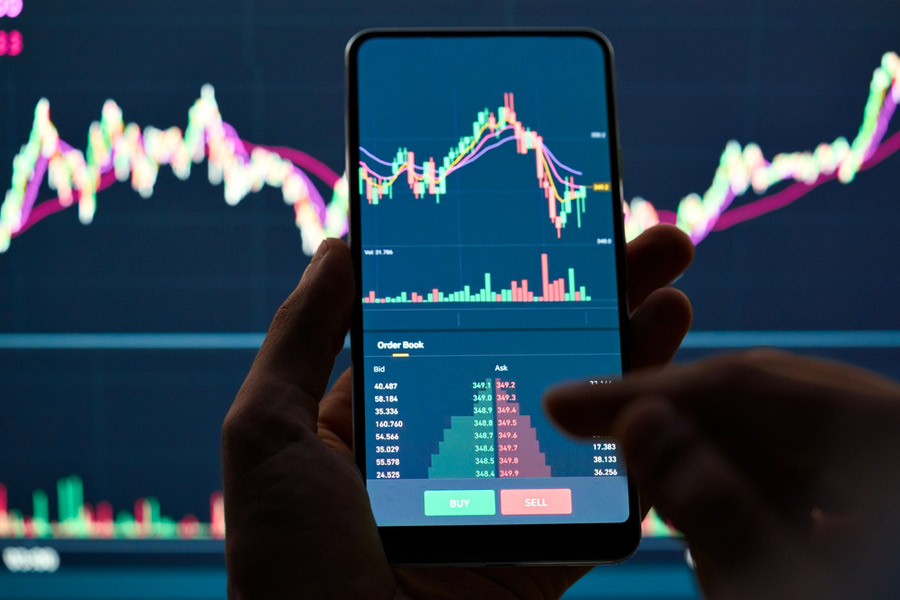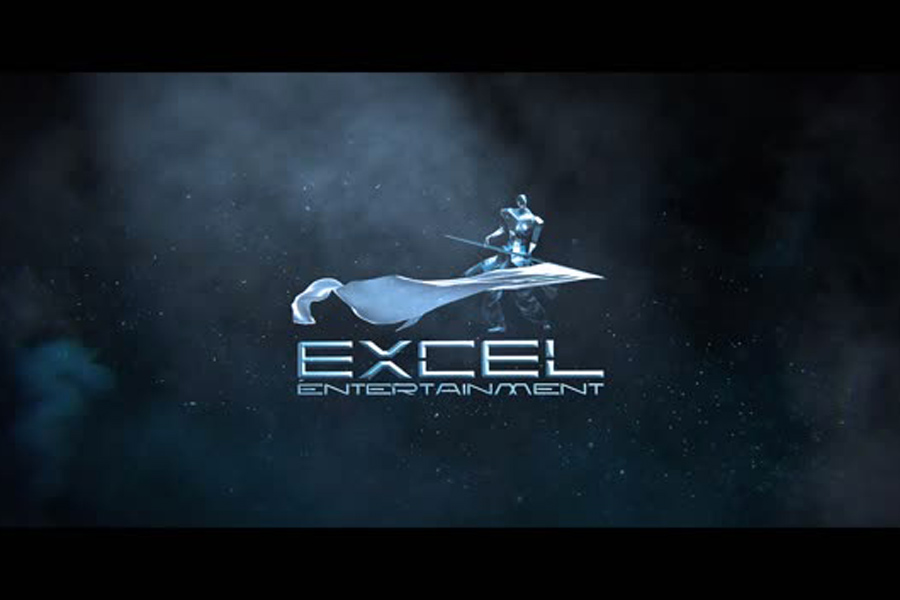A ‘NOTCH’ HIGHER

Mobile World Congress 2018 clearly belonged to Samsung. On the company’s latest flagship, the Galaxy S9 and S9+, the familiar all-screen design remains but the camera has been reinvented completely and that will set new benchmarks for the mobile industry.
The Galaxy S9+ comes with more memory and storage compared to the smaller S9, and it also has a dual-camera system, which includes a telephoto camera. But it is the wide-angle camera fitted to both models that marks the biggest change. The 12-megapixel camera has the first variable aperture fitted to a smartphone. This means you can switch between an f-stop of 1.5 for low-light photography and an f-stop of 2.4 for shooting outdoors. It’s about replicating what the human eye can do automatically.


The other features of the phone that place Samsung’s new offerings above the iPhone X are:
1 The 5.8-inch screen on the S9 is the same as the iPhone X screen but it comes minus the notch (thank god!). The S9+ has a larger 6.2-inch screen. In fact, the S9 screen has been awarded DisplayMate’s (which analyses screen quality across smartphones, televisions and other products) Best Performing Smartphone Display Award and its “highest ever A+ grade”. According to DisplayMate, the Galaxy S9’s colour accuracy is “visually indistinguishable from perfect”.
2 The phones have stereo speakers and they’re tuned by AKG and have a Dolby Atmos codec which offers richer, louder sound.
3 The phones have the fingerprint scanner on the back of the phone. This is such a big relief when compared with the iPhone X, which relies on FaceID. Yet, both companies offer facial-recognition features but the technology used is different. While the iPhone X has a True Depth (depth-sensing) camera on the front of the phone to map out your face in 3D using infrared dots, the Galaxy S9 and S9+ use Intelligent Scan, a combination of the iris scanner and the less-secure facial recognition feature that uses the non-depth sensing front camera to unlock.
4 The AR emojis on Samsung are better than Apple’s animojis, as these look realistic and they capture your facial expressions.
5 The S9 offers onboard storage up to 256GB and up to 400GB of expandable storage. The iPhone X only offers a 64GB and 256GB option with no SD card slot.
6 The headphone jack is still around, which translates into good marketing for the Korean company.
7 The phone’s new snapper allows 960 fps slow motion, which is better than the iPhone’s 240fps slow motion.
8 DeX, a system that lets you work your Galaxy smartphone as a desktop computer. This means a lot to enterprise users.
In India, the phones will be officially announced on March 6 and will go on sale on March 16.
BACK TO SCHOOL
The three new Chromebooks from Lenovo sure can take a beating at the hand of its users… school students. Focused on the school-going crowd, the 100e ($219), 300e ($279) and 500e ($349) Chromebook can withstand most damages that a third-grader can think of. They come with rubber bumpers and liquid resistant keyboard, which make them somewhat drop- and splash-resistant. While the 100e and 500e are powered by Intel Celeron processor, the 300e comes with MediaTek chipset. The viewing angle is better on the 300e and 500e but the best aspect of the 300e is that you can write on the screen with a pencil without damaging the tempered glass screen, while the 500e has its own electro-magnetic resonance pen which makes note-taking easy. Our favourite? The 500e.


HIGH FIVE

Last year in Barcelona, HMD’s Nokia made us nostalgic by reviving the 3310, which first went on sale in 2000. This year, the company did the same with the Nokia 8110, which first released in 1996. This one looks like a banana. Of course, this is just a marketing ploy to make us remain hooked to brand Nokia.
The real big launch was the Nokia 8 Sirocco (available early April; euro 749 before taxes), a high-end phone with face unlock, a 2K 5.5-inch pOLED screen, 128GB storage and 6GB of RAM. This phone is meant to compete with the iPhones, Galaxies and Pixels. The message is clear: Nokia can still compete in every price segment.

Also announced was the Nokia 7 Plus (euro 399 before taxes), which has a 6-inch full HD screen and a rear camera with dual sensors for great low-light snaps and lossless zooming. This is the first HMD phone to have ultra-wide or long screens, with a Full HD+ 18:9 IPS panel.
There’s more. The reworked Nokia 6 (euro 279 before taxes), which was the first of the new Nokia phones, launched in January 2017. It now has a higher-spec Snapdragon 630 CPU, in place of a Snapdragon 430.
But the phone that can swing things for the company is the Nokia 1 ($85, excluding taxes), which targets feature phone users who want to switch to smartphones. It has a 4.5-inch 720p screen, a low-end MediaTek CPU and 1GB RAM. And it uses Android Oreo’s Go edition, a version of Android designed for mobiles with less RAM and low power.
TRENDSETTER

What Vivo had at MWC was a concept phone. But we see it as the future of smartphone trends. First things first, in-display fingerprint scanner on the Vivo Apex. The company made a splash at CES 2018 with the technology but now it’s there in the production-ready model. The best thing about the fingerprint scanner is that it’s not limited to a single spot on the screen. One can unlock the phone by pretty much touching anywhere on the lower half of the screen. We are not done. Since the scanning area is half the screen, two fingerprints can be taken simultaneously, which may help in security-related apps.

Second, the bezels are almost non-existent. Except for the chin of the phone, the screen covers the entire phone. Third, a new speaker system. Since the screen is big, many of the components had to be pieced together differently than those from other companies. What we saw is a technology called Screen SoundCasting, which vibrates sound through the screen and into the ears during phone calls. This is similar to piezoelectric audio technology.

There’s more. Selfie lovers may get anxious looking at the phone because the front camera is not visible… it slides out and retracts from the top of the phone when one opens the camera app to take a selfie! This has helped Vivo save space on the phone’s “forehead”. Speaking of retracting cameras, another Chinese phone maker, Bluboo, presented the S2 which has a camera that flips upwards from the back, which means the back camera becomes the selfie camera.
FEEL THE BEAT

On the Sony XZ2, we don’t like the placement of the fingerprint scanner, which is on the rear of the phone and right in the middle, just below the camera sensor. Otherwise, it’s a phone that can give every other flagship a run for its money. It doesn’t look like the iPhone X or the Samsung Galaxy S9 but it’s as powerful as its competition. Powered by Qualcomm’s Snapdragon 845 processor and sporting a 5.7-inch display, it has a 19MP rear-facing shooter. When shooting 4K video, the camera is capable of capturing HDR colour and the ultra slo-mo mode can record 960fps footage at a higher 1080p resolution. There is also a Compact version of the phone, which comes with a five-inch screen.
What are the big distinguishing features? One, the Dynamic Vibration System that makes your phone vibrate based on the audio of the film you are viewing or the game you’re playing. Of course, the feature can be turned off. Second, the Xperia Ear Duo. The Bluetooth sits snug in your earhole while the rest of it tucks slightly behind your outer ear. The dual microphones on each earpiece can pick up voice commands.
The Xperia XZ had given us a 3D creator mode that allowed users to scan objects with the phone’s camera and build 3D models that could be shared on Facebook or printed. The game has been improved because now faces can be scanned brilliantly and the 3D avatar can be used in various scenarios.
FOLLOW THE ARROW

Apple doesn’t participate at MWC. But Asus ensured that people talk about the iPhone X and more specifically, the notch. The ZenFone 5Z, with a 6.2-inch screen, is larger than the iPhone X but that notch is there, even though it’s narrower! Ahead of the phone’s launch, Asus had a media briefing where it told The Verge: “Some people will say it’s copying Apple but we cannot get away from what users want. You have to follow the trends.” The other company to follow the trend is Ulefone with its flagship T2 Pro. Coming back to ZenFone, at the heart of it is a Qualcomm Snapdragon 845 processor, up to 8GB RAM and up to 256GB built-in storage (the Zenfone 5 features a Snapdragon 636 processor).
FLIP AROUND

If you are travelling to Europe, pick up the Doro 7060 clamshell phone. It looks like a basic phone but this flip phone runs on 3G and 4G networks and allows web browsing. Equipped with a 2.8-inch main colour display and a 1.44-inch colour external display with caller ID, the keys are well spaced out to facilitate easy typing. The phone runs KaiOS, which allows users to download apps. The Swedish company has a big following among senior citizens.
UTTERLY FLUTTERY

No, another Pixel phone was not launched at MWC. But Google has introduced the first beta SDK (Software Development Kit) of its Flutter UI framework, which allows developers to come up with application that will work on iPhones and Android devices. Since it’s tough to develop software to match the appearance of Apple’s iOS software and Google’s Android OS, separate teams are often hired to create two versions of one product. Flutter helps give apps a native look for either mobile realm. And it’s also compatible with Fuchsia, Google’s upcoming OS. The best working example of Flutter at the moment is the Hamilton: The Musical app.
NOT LOST IN TRANSLATION

Waverly Labs specialises in real-time translation through a pair of Bluetooth earbuds and its Pilot earphones could be a gamechanger. The $250 earbuds come with two modes — one for listening to those who speak in another language while the second is for conversation. Funded by a successful Indiegogo campaign that brought the company $4.4 million (around 3,000-per cent of its initial goal), you simply need to speak naturally and if the other person has an earpiece, he or she will hear a translated version of what you say in a computer voice. You can even have group conversations with people speaking different languages. And the translation is accurate enough to offer Google’s Pixel Buds competition.
Pre-orders of the Pilot Translating Earpieces come with free access to French, Italian, Portuguese and Spanish, along with English. Users can purchase additional languages later this year, including Arabic, Mandarin Chinese, German, Greek, Hindi, Japanese, Korean, Polish, Russian, Turkish and more!
SMART JUMPS

There’s always that one gizmo you never knew you wanted. In our case, it’s the South Korea-based Tangram’s Smart Rope, which comes with embedded LED lights that show how many jumps you’ve accomplished. The device can detect how fast you are jumping and the LED pulses accordingly. It can be paired with Tangram’s app which helps to keep an eye on calories burned and it even lets you compete with friends on who made the most number of jumps.










